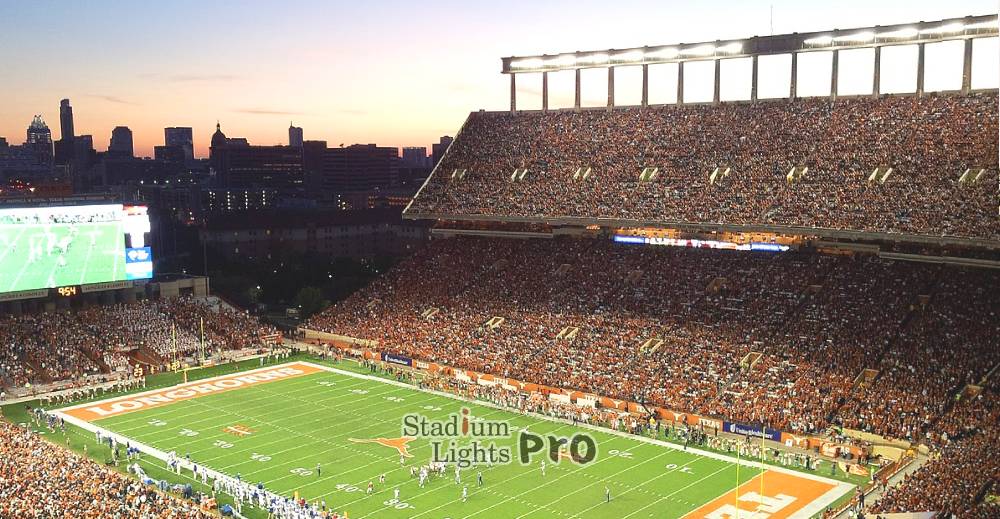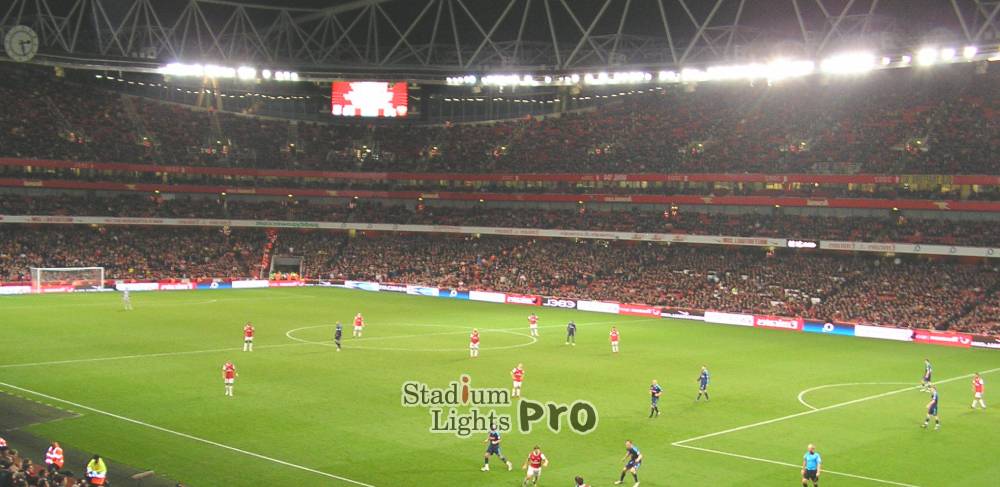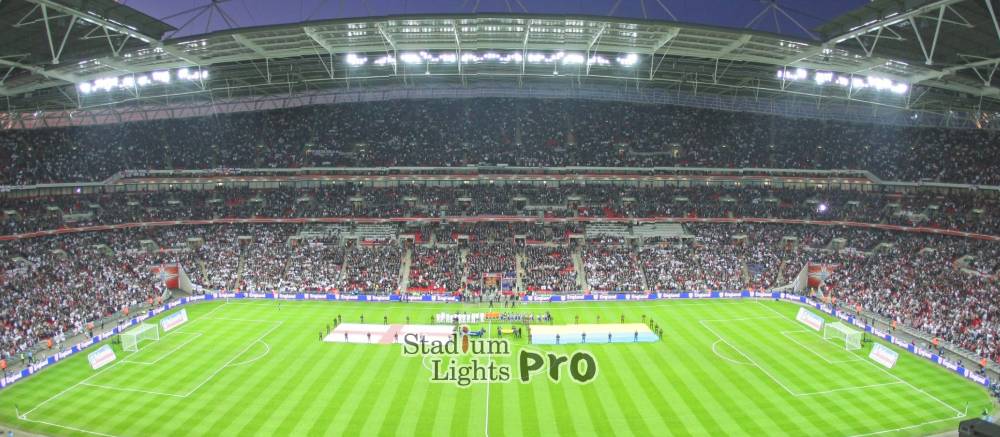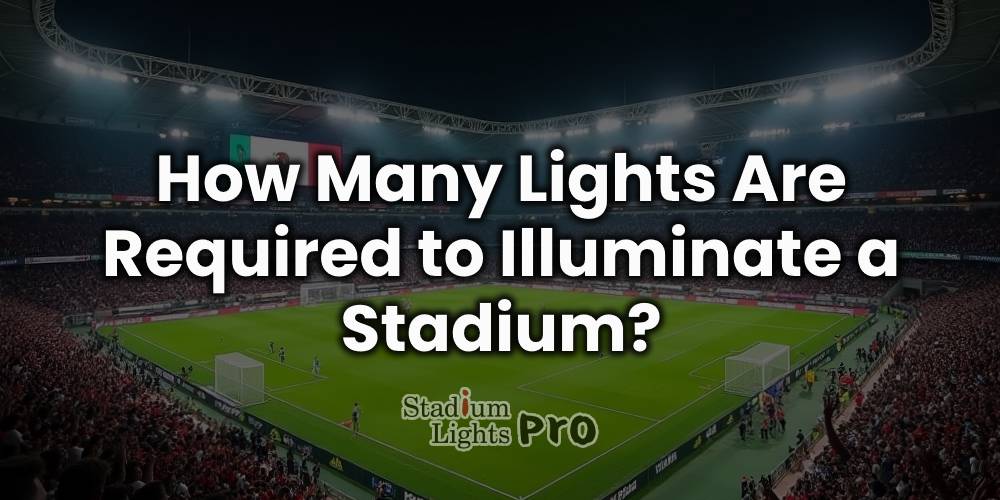Table of Contents
ToggleFactors Affecting Stadium Lighting
Stadium Size and Layout
The first factor that influences the number of lights in a stadium is its size and layout. Larger stadiums naturally require more lights to cover their entire area. A professional football or soccer field, for example, covers about 105 meters by 68 meters, while smaller venues, such as tennis courts or basketball arenas, have much smaller surface areas. The seating capacity also affects the lighting design. A stadium that holds 60,000 spectators needs to ensure that the lighting extends to the stands, not just the field. Additionally, the difference between indoor and outdoor stadiums alters the lighting strategy. Indoor stadiums may need a more controlled, evenly distributed lighting scheme due to the enclosed environment, while outdoor stadiums must account for environmental factors like weather conditions and natural light.
Type of Sport
Different sports have varying lighting requirements depending on the speed of play, size of the playing field, and the ball’s visibility. A baseball stadium may require different light positioning to ensure that the ball is visible as it flies through the air, whereas football or soccer may need consistent lighting over the entire field due to the movement of players and the ball across a large space. For sports like tennis, which involve a smaller playing area and fast-moving balls, lighting must be focused and precise, often requiring higher-intensity lights in localized areas. Sports that rely heavily on visibility for both players and spectators tend to need more intense and well-distributed lighting compared to other events.
Lighting Standards and Regulations
Stadium lighting is not just a matter of preference; it is governed by strict standards and regulations set by international sports organizations and local governing bodies. These regulations define minimum lighting requirements for different sports and events. For instance, FIFA (Fédération Internationale de Football Association) mandates that stadiums hosting international football matches must maintain a specific lux level, which measures the brightness of light falling on a surface. In the case of televised events, the lighting needs to be even more precise, as high-definition broadcasts require uniform brightness to prevent flickering or dark spots. These standards help ensure that all participants, whether players or viewers, experience the game under optimal conditions.

Level of Competition
The level of competition hosted at the stadium also plays a role in determining the lighting requirements. Professional sports require more comprehensive lighting systems compared to amateur or recreational events. A local high school football game may only need basic lighting to ensure players and referees can see the field, whereas a national or international event demands a much higher degree of light intensity and distribution to meet the expectations of live audiences and broadcast coverage. Televised events, in particular, necessitate higher lighting levels because cameras and viewers at home rely on precise lighting to capture the action.
Calculating the Number of Lights Needed
Calculating the number of lights required to illuminate a stadium involves determining the appropriate lux levels, understanding the wattage of the lights being used, and evaluating how to distribute the lights around the stadium to achieve uniform coverage.
Lux Calculation
The lux level is a measure of the brightness that reaches the playing surface. Different sports have varying lux requirements, and the size of the stadium affects how many lights are needed to achieve the desired lux. For example, football matches generally require between 500 to 1000 lux for non-televised games and up to 2000 lux for televised events. Smaller sports like tennis may only require around 300-500 lux. Lux calculations are based on the total area of the field and the type of sport being played, so a larger field with higher lux requirements will naturally need more lights.
Power of Each Light
The wattage of individual lights also impacts the number of lights needed. Higher wattage lights produce more brightness, which reduces the number of fixtures required to cover a given area. For example, a 2000-watt light may provide sufficient coverage for a portion of the field, while smaller wattage lights might necessitate more fixtures to achieve the same result. However, using higher wattage lights can increase energy consumption, so the balance between brightness and energy efficiency becomes a critical aspect of lighting design.
Light Placement and Distribution
The arrangement of lights within the stadium is equally significant in determining how many lights are required. Lights are typically placed on poles or towers positioned around the perimeter of the stadium or mounted on the roof of indoor arenas. The height of these lights affects their spread, with higher-mounted lights able to cover a broader area. However, this also means that the lights need to be more powerful to ensure adequate brightness at ground level. Light placement must be carefully planned to avoid shadows, dark spots, or excessive glare that could impair players’ vision.

Below is a table illustrating how many lights might be needed for a typical football stadium based on different lighting scenarios. The table takes into account the size of the field, the lux levels required, and the wattage of the lights.
| Scenario | Field Size (m²) | Lux Level (lx) | Total Lumens Required | Wattage of Each Light | Number of Lights |
|---|---|---|---|---|---|
| Non-Televised Football Match | 7140 | 500 | 3,570,000 | 1500W | 400 |
| Televised Football Match | 7140 | 2000 | 14,280,000 | 2000W | 800 |
| International Competition | 7140 | 2500 | 17,850,000 | 2500W | 950 |
The table shows how varying the lux levels and wattage affects the total number of lights required to properly illuminate the field. As lux levels increase, the total lumens required rise, necessitating either more lights or lights with higher wattage.
| Scenario | Court Size (m²) | Lux Level (lx) | Total Lumens Required | Wattage of Each Light | Number of Lights |
|---|---|---|---|---|---|
| Non-Televised Basketball Game | 420 | 500 | 210,000 | 1000W | 60 |
| Televised Basketball Game | 420 | 1500 | 630,000 | 1500W | 100 |
| International Basketball Event | 420 | 2000 | 840,000 | 2000W | 120 |
This table illustrates the number of lights needed to illuminate a standard basketball arena, considering different lux levels and wattage for non-televised, televised, and international events. Basketball courts are smaller than football fields, but they require concentrated lighting to ensure player visibility and an optimal experience for both live spectators and broadcast viewers.

Challenges and Considerations
Energy Consumption and Costs
Lighting a stadium can consume a significant amount of energy, especially for larger venues or during high-profile events that require intense lighting. The cost of energy and the need for sustainable solutions often drive stadium designers to seek energy-efficient lighting options. In addition to initial installation costs, the operational expenses of running hundreds of high-wattage lights for hours at a time can add up. Thus, finding the right balance between sufficient lighting and energy efficiency is one of the challenges faced by stadium operators. Advances in lighting technology, such as LED systems, have helped reduce energy consumption, but energy costs remain a consideration.
Maintenance and Longevity of Lighting Systems
The longevity and durability of stadium lighting systems are important aspects to consider. Lights need to be maintained regularly to ensure they function properly and maintain the desired brightness levels. Over time, lights may degrade, resulting in lower light output, which can affect the quality of illumination in the stadium. Maintenance also involves replacing burnt-out bulbs and cleaning lighting fixtures to ensure they are free of dirt and debris that could obstruct the light. The overall lifespan of the lighting system, therefore, plays a role in how stadiums are designed and operated.
Environmental Impact
The environmental impact of stadium lighting extends beyond energy consumption. Light pollution is a concern for outdoor stadiums, as excessive or poorly directed light can affect surrounding areas, including wildlife and nearby communities. To minimize this, lighting systems must be designed with careful attention to how the light is directed and distributed. The goal is to ensure that the majority of the light falls on the field or arena, reducing waste and avoiding unnecessary light spillover into areas where it is not needed. Some modern lighting systems are equipped with directional controls and dimming capabilities to minimize their environmental footprint.
Case Studies
Lighting in Major Stadiums
Stadiums worldwide have adopted various approaches to meet their lighting needs, each tailored to the specific events they host. Wembley Stadium in London, for example, is one of the largest stadiums in Europe and has installed a state-of-the-art lighting system that provides exceptional clarity for both live audiences and television viewers. Its system, comprising approximately 360 floodlights, is designed to meet international standards while minimizing energy consumption and ensuring an even distribution of light.
MetLife Stadium in New Jersey, home to both the New York Giants and New York Jets, has a lighting system that incorporates about 400 high-intensity LED lights. This system is designed to be versatile enough to handle both football games and non-sporting events such as concerts. Its lighting plan allows for adjustments depending on the event’s needs.
Technological Innovations in Stadium Lighting
As technology advances, stadium lighting systems have become more sophisticated. The use of smart lighting technology, for instance, allows operators to control the brightness and focus of the lights with precision, enabling dynamic lighting that can be adjusted in real time. Some systems can even be integrated with software that monitors light usage and energy consumption, helping stadiums optimize their lighting to reduce costs and environmental impact.
Dynamic lighting, which adjusts the intensity of the lights based on the action on the field, is also becoming more popular. This allows for a more immersive experience for spectators, as the lights can be dimmed or brightened depending on the pace of the game or the event being hosted.
Conclusion
Determining how many lights are required to illuminate a stadium is a complex process influenced by multiple factors. Stadium size, the sport being played, and the level of competition all play significant roles in calculating the right number of lights. Calculating lux levels and evaluating the wattage of each light help ensure that the playing field is evenly illuminated, providing an optimal experience for athletes, spectators, and broadcasters alike. By carefully considering these factors and leveraging technological innovations, stadium operators can achieve effective lighting solutions that balance performance, energy consumption, and environmental considerations.

